What's A Vole?
Voles are small, mouse-like mammals that are more closely related to lemmings than to other rodents. They live above ground and feed on vegetation, seeds, roots, and anything else they can find. Voles are active year round, digging tunnels through the snow to get to food stores and burrows. They will chew paths through vegetation after snow melt to create paths they follow to food sources. Typically they have a short life span, but mainly due to the fact that they are prey to so many other animals. There are three types of voles that can be found in the Toolik area, the northern red-backed vole, the arctic vole, and the singing vole. While they may be small, they play a big role in the health of the ecosystem they live in. Voles are a fundamental prey species in the tundra food chain which means they are a major link between the energy and nutrition in vegetation and the energy and nutrition needed by their predators.
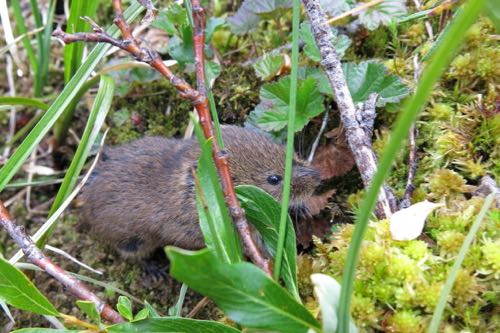 Tundra Vole Photo credit: ©2015 Seth Beaudreault Courtesy of Toolik Field Station EDC
Tundra Vole Photo credit: ©2015 Seth Beaudreault Courtesy of Toolik Field Station EDC
Team Vole's Method
So how do you catch a vole? First, you prepare a "sandwich" of paper towels and peanut butter and then it gets cut into small squares to bait the traps. The types of traps that they use are called Sherman traps. The bait and a bit of nesting material is placed inside and the trap is set.
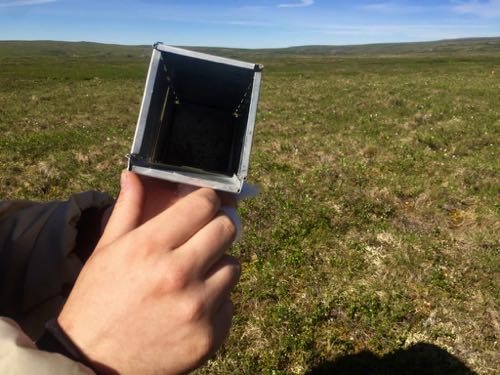 The collaspable Sherman traps used for trapping voles.
The collaspable Sherman traps used for trapping voles.
Signs of vole activity, like scat piles, tussock burrows, or vegetation mats, help to determine placement of the traps.
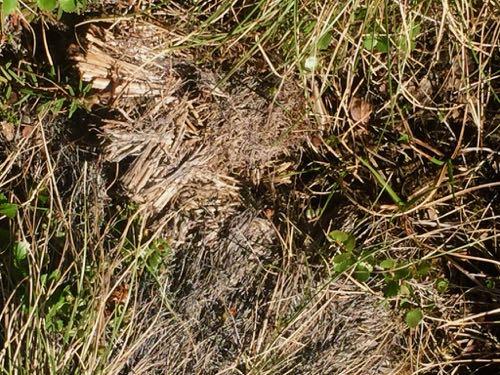 This is an older vegetation mat (more than 1 year). This is one of the signs Matt and Megan look for when placing traps.
This is an older vegetation mat (more than 1 year). This is one of the signs Matt and Megan look for when placing traps.
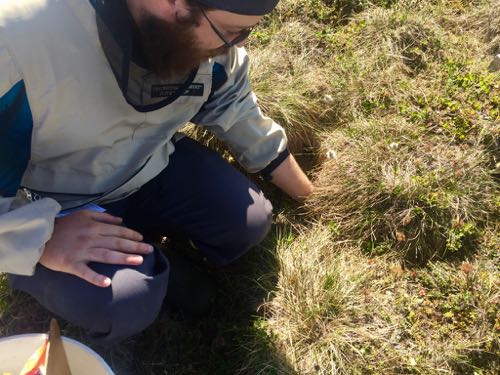 Matt demonstrates how far a vole can burrow under a tussock.
Matt demonstrates how far a vole can burrow under a tussock.
The traps are marked with flags and are checked every 4-6 hours around the clock. If a vole is in the trap more than that, the instance of trap deaths increases.
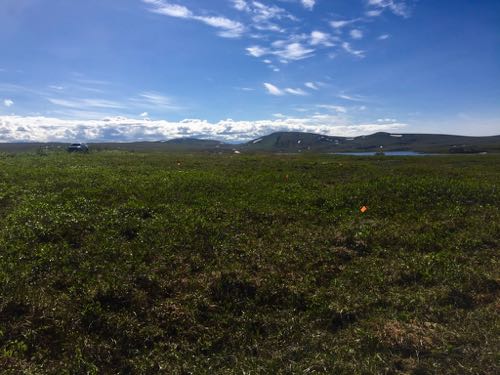 The flags show where vole traps can be found.
The flags show where vole traps can be found.
Unfortunately, Matt, Megan and I found empty traps. If there is a capture, I have been invited to go to the experimental enclosures at Imnavait Creek to see them be processed and I will be sharing that in a new blog. I confident that Team Vole will have successful trapping session and I will report back with an update!
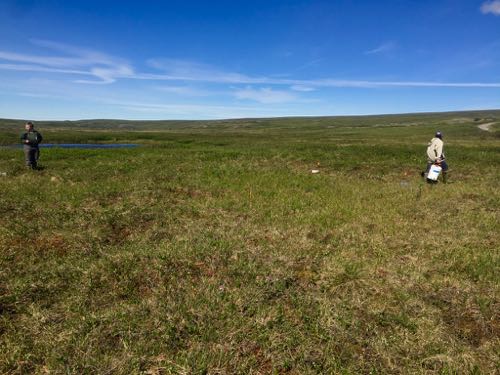 Matt and Megan checking to see if any of the traps have tripped.
Matt and Megan checking to see if any of the traps have tripped.

Comments
Add new comment